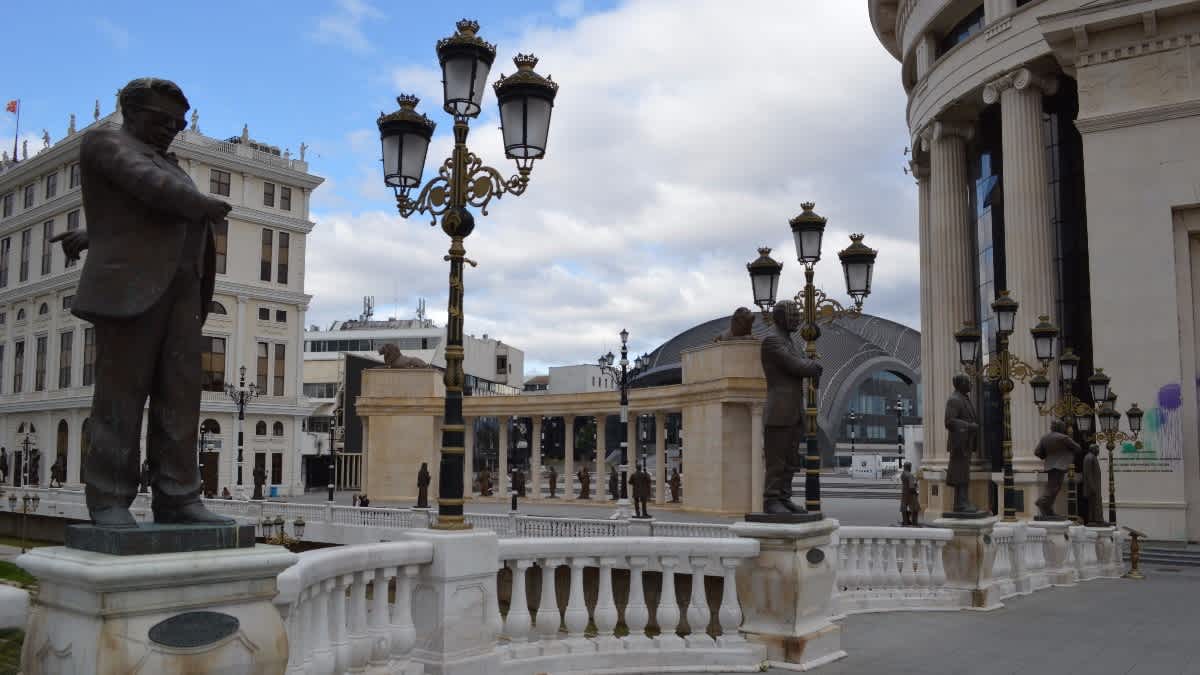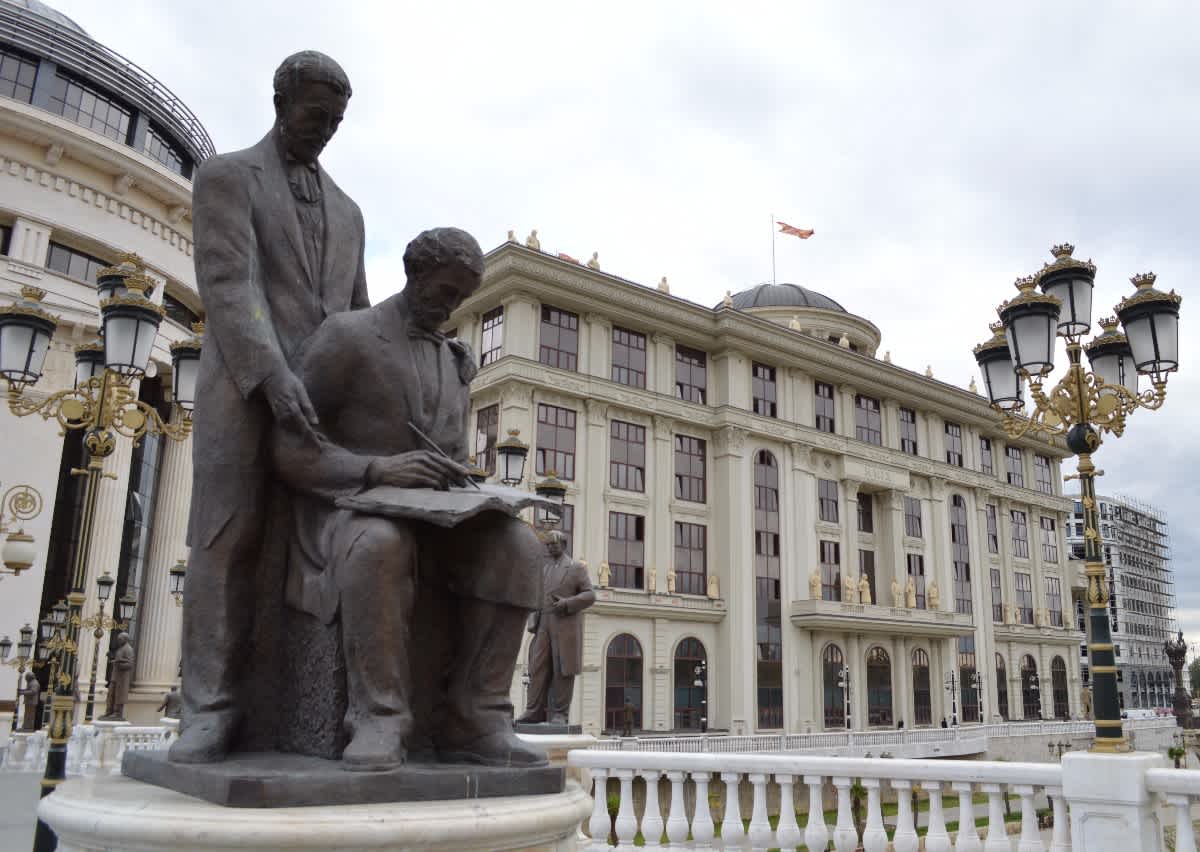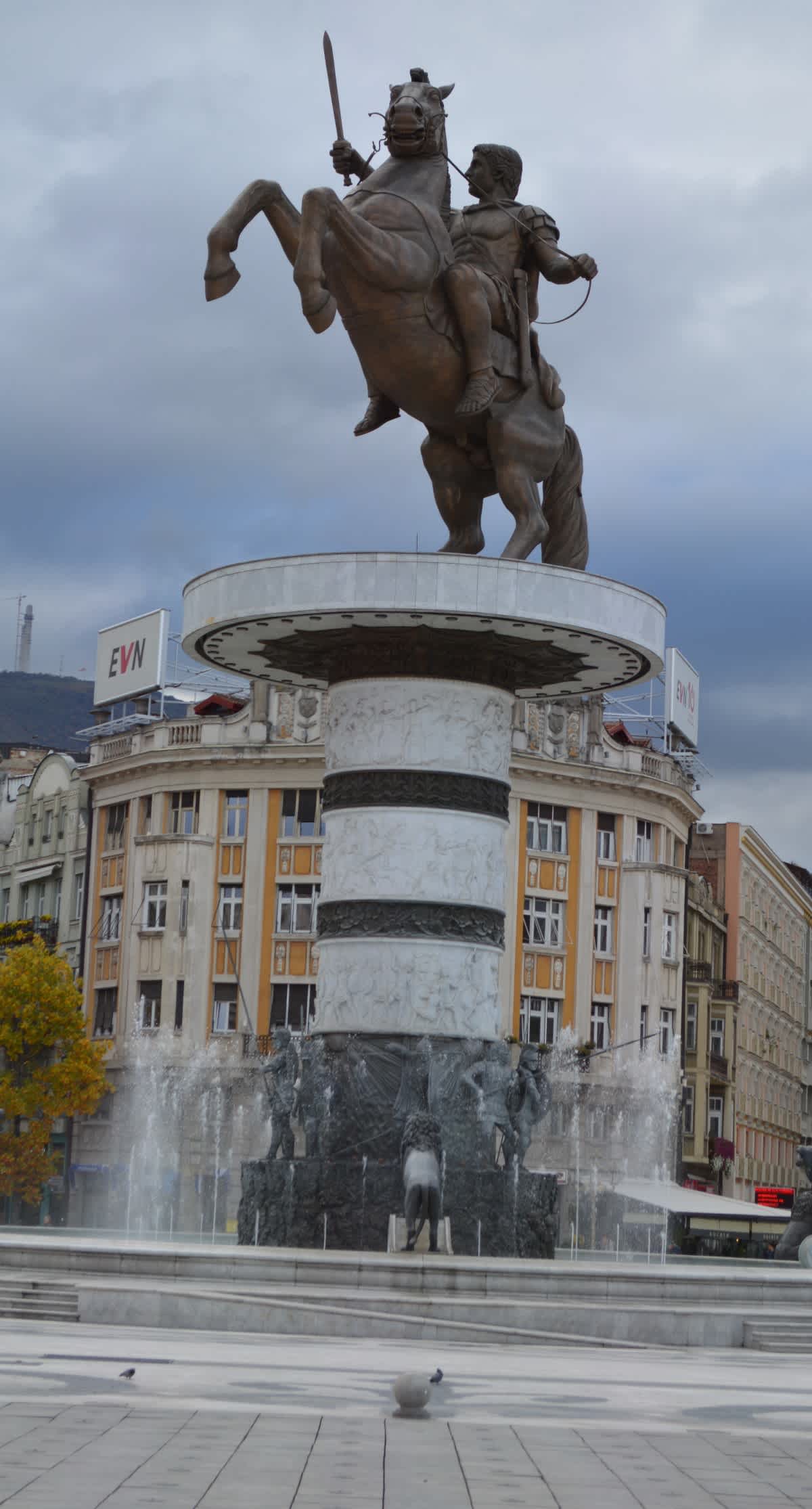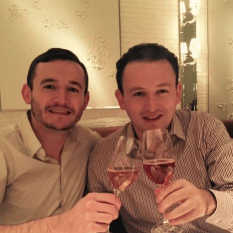
And erection criteria
On Skopje's statues
‘Where are the girl statues?’, the five-year old asks, as we cross the curiously named ‘Art Bridge’ over the Vardar River in Skopje, capital of the even more curiously named ‘Former Yugoslav Republic of Macedonia' (as it is known to some).

Twenty-nine statues and not a single woman. Artists and musicians, but no female cultural icons. Most of those represented were initially a mystery to me. There are the playwrights, Vojdan Černodrinski (author of ‘Macedonian Bloody Wedding’) and Vasil Iljoski; the painters Nikola Martinoski, Dimitar Kondovski, Petar Mazev and Lazar Ličenoski; the writers, Kočo Racin and Živko Čingo; and the poets, Aco Šopov and Blaže Koneski. At the centre of the bridge are the Dimitar and Konstantin Miladinov brothers, famous for their folk songs.

I eventually recognize "Toše" (Todor Proeski) - once dubbed the "Elvis Presley of the Balkans" - clutching a microphone. The few songs of his I know immediately enter my head, but are slow to leave. He died in a car crash in Croatia at the tender age of twenty-six; another truth kept from the five-year old for the time being.

And then there is the 'Eye Bridge' (once called the ‘Bridge of Civilizations’), with thirty-two statues dedicated to different epochs of Macedonia’s varied history. There are Kings, Generals, Emperors, Bishops, Aristocrats, Noblemen and Intellectuals; Alexander I of Macedon, Parmenion, Ivan Vladislav and Saint Gavril Lesnovski, to name but a few. Some clutching helmets, shields; wearing body armour or scantily clad; posing authoritatively or philosophically. Again there are no women, not even as martyrs.

The statuesque centerpiece is the bronze Warrior on a Horse - widely understood to be Alexander the Great, who has also given his name to the country’s airport and main highway - the leaping steed seemingly intent on dismounting its sword-bearing passenger. A projection of a specific identity grounded in historical claims that remain disputed.

Women are represented elsewhere, but typically only as mothers. A boy on his knees clings to the thighs of a woman in traditional clothing, her head cothers, as she reaches out a concerned yet reassuring hand to three other minors. In another, pleated haired women sit beneath a fountain cradling or cuddling children on their laps.

Statues go up and are pulled down. They often embody a particular moment or juncture in history; one which may or may not endure in the memories of future generations. Budapest's surreal Memento Park contains the remnants of the Soviet Age; statues of statues of Lenin, Marx, and Engels. Who can forget the toppling of the statue of Saddam Hussein in Baghdad?
Should there be a more democratic criteria governing their erection? Not necessarily. Bruce Lee was chosen as Mostar’s symbol of peace, fending off stiff competition from the then Pope and Gandhi. His statue, in fighting repose, was quickly vandalized.
For the people of Žitište in Serbia’s autonomous province, Vojvodina, Rocky Balboa, arms raised aloft in victory salute, takes pride of place in the town center. I’m told that the town of Čačak in Serbia once flirted with the idea of erecting a statue of the British singer, Samantha Fox.
Young people in Macedonia may well grow up hoping to erect a statue of their own. Whatever criteria governs their choice, they’d do well to bear in mind what future generations may well think.
Ian is a writer based in the Balkans. He is the author of 'Dragon's Teeth - Tales from North Kosovo' and 'Luka'. Follow Ian on Twitter @bancroftian.
Currently in: Belgrade, Serbia — @bancroftian
